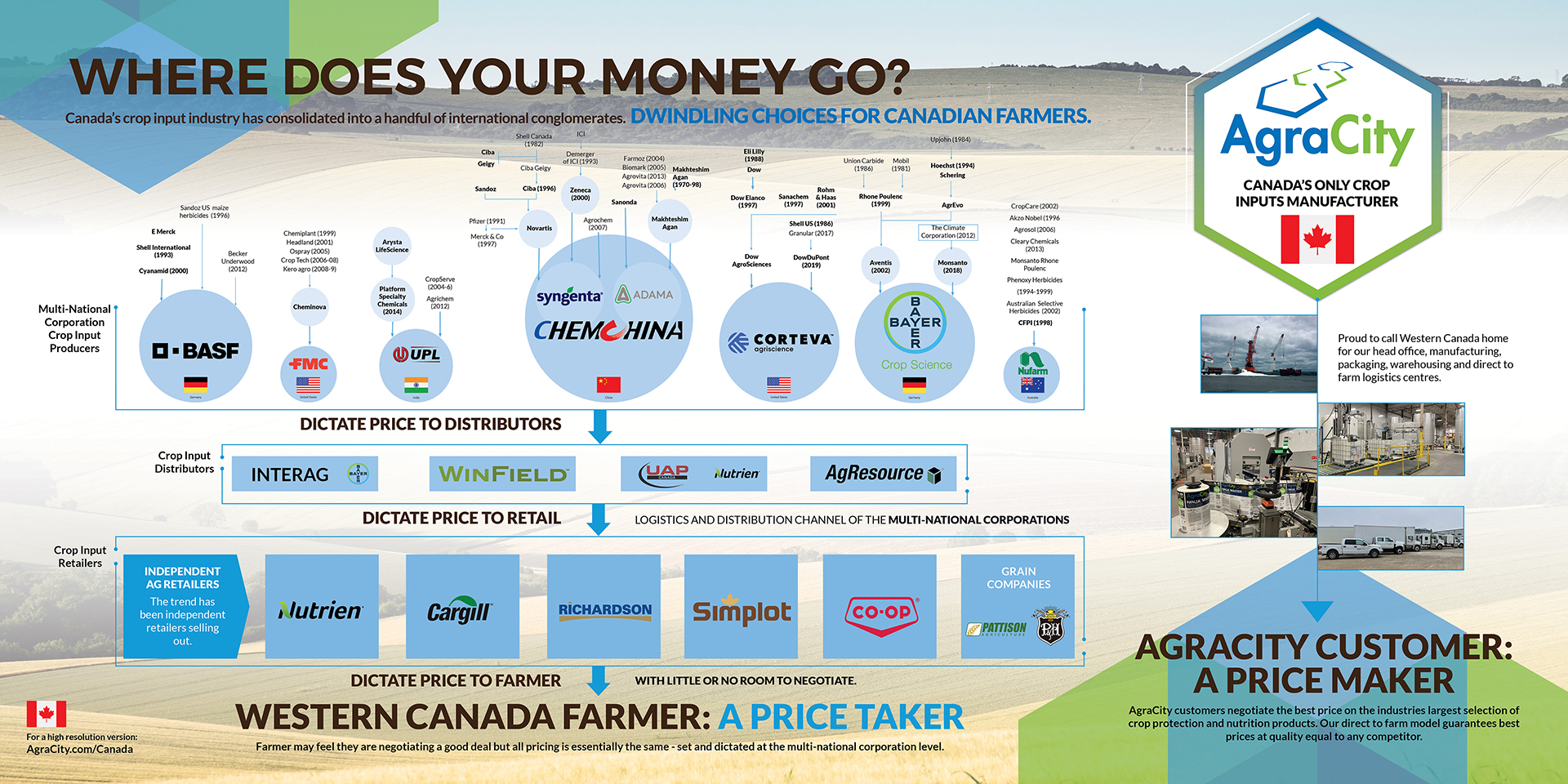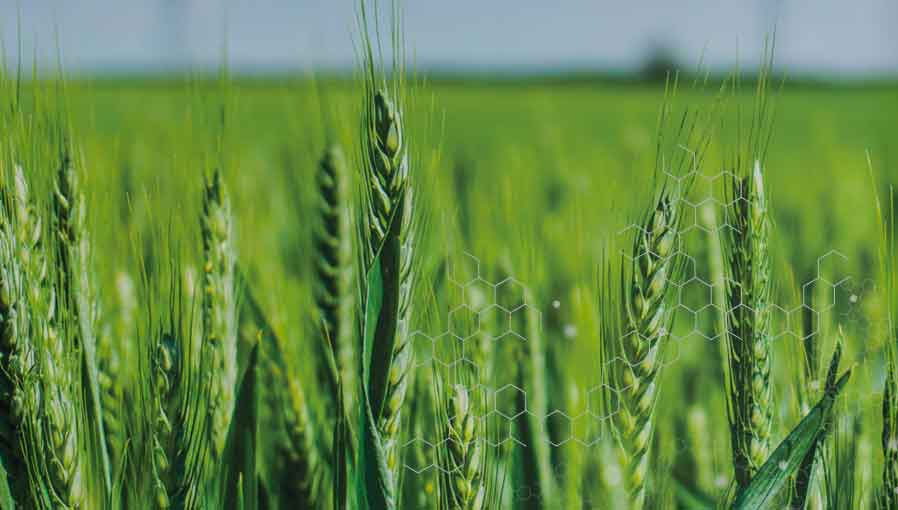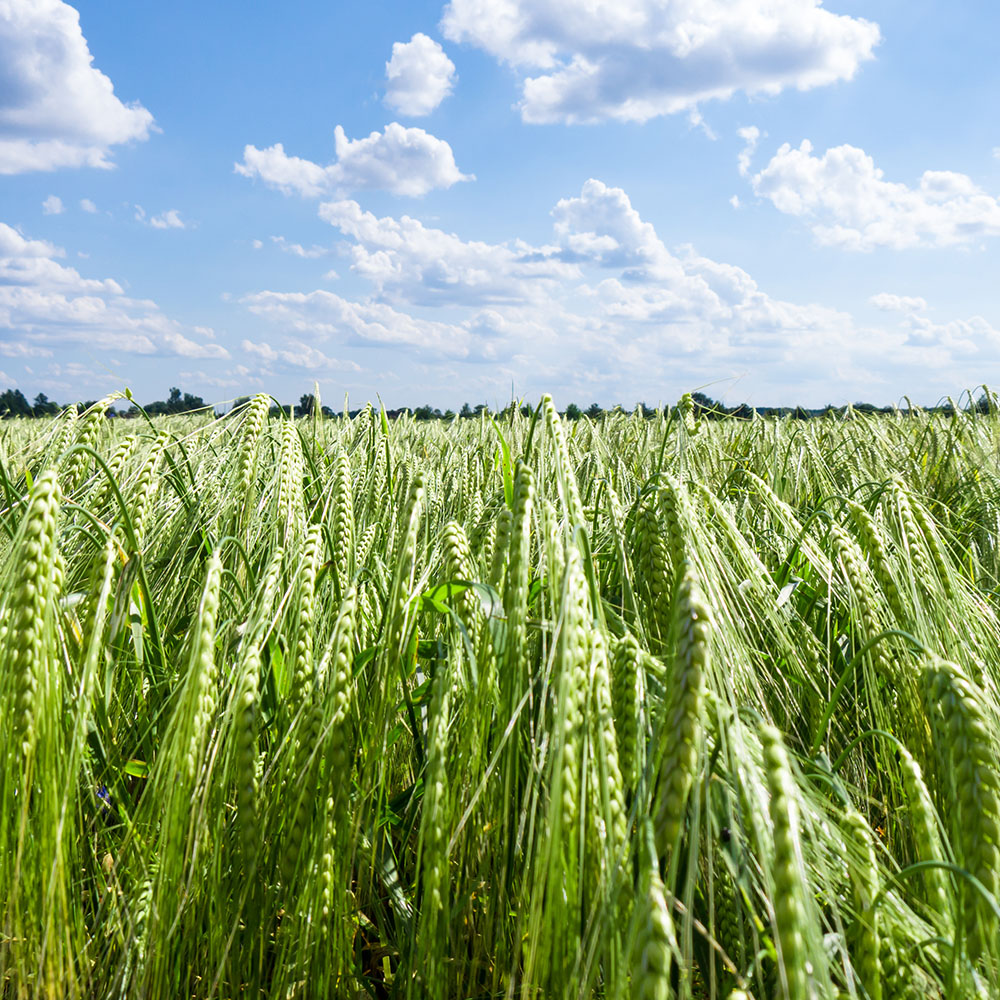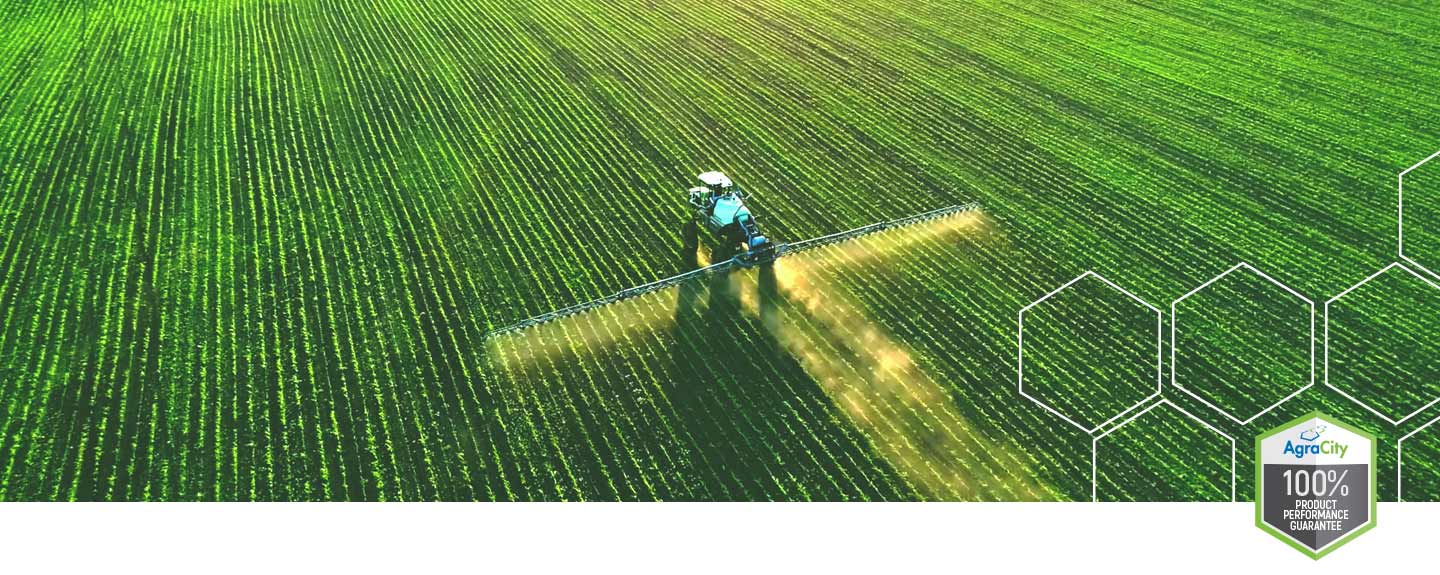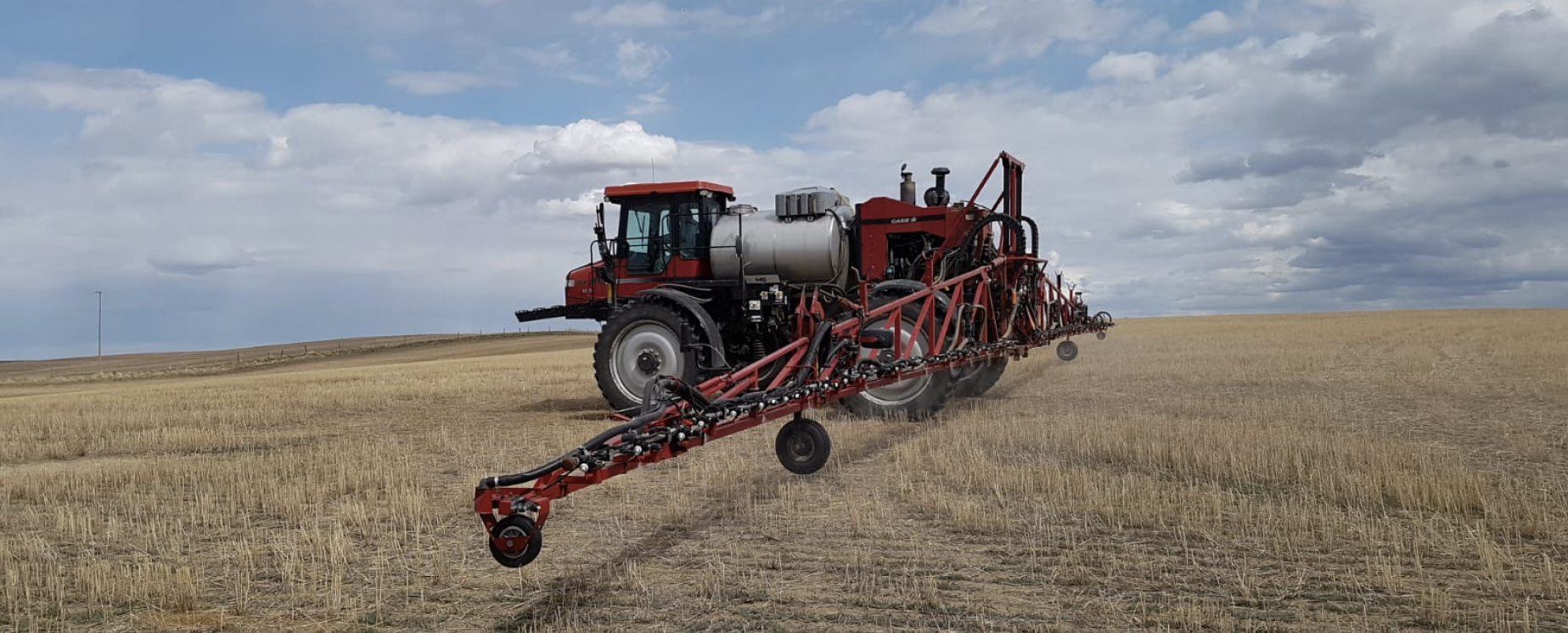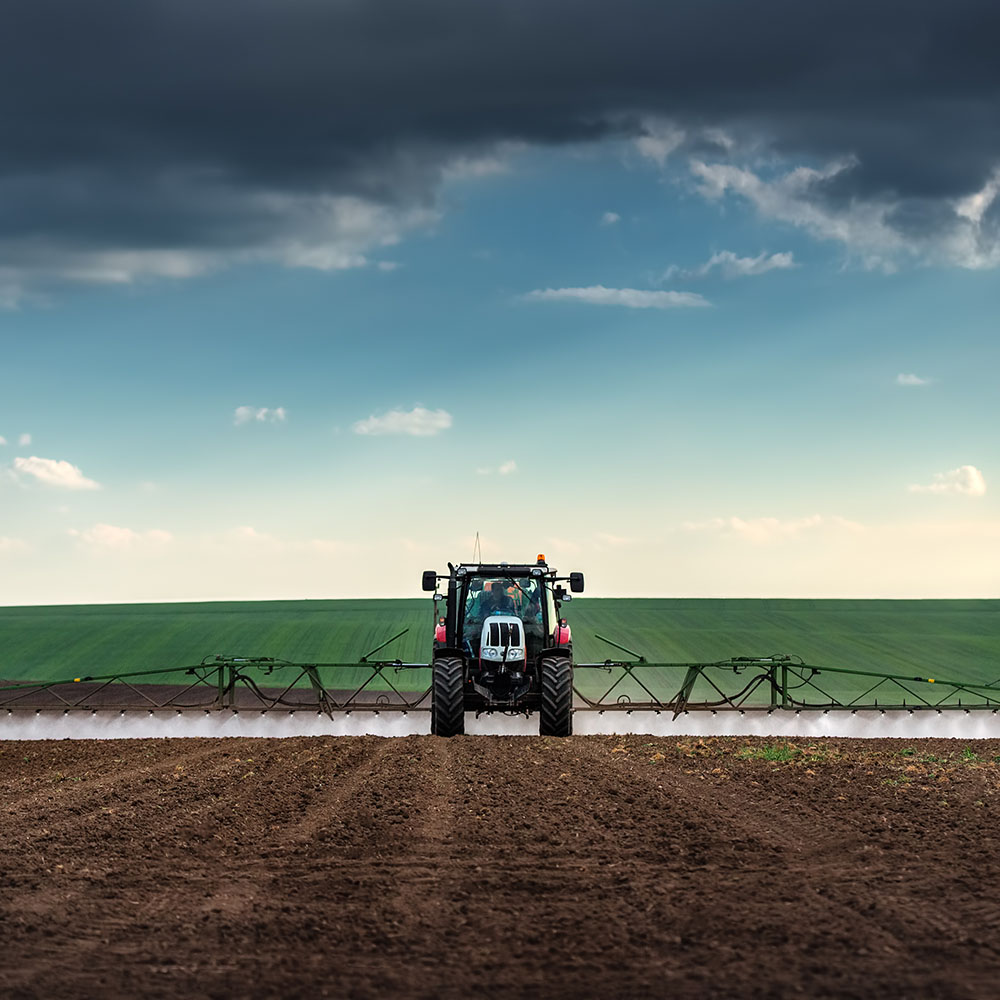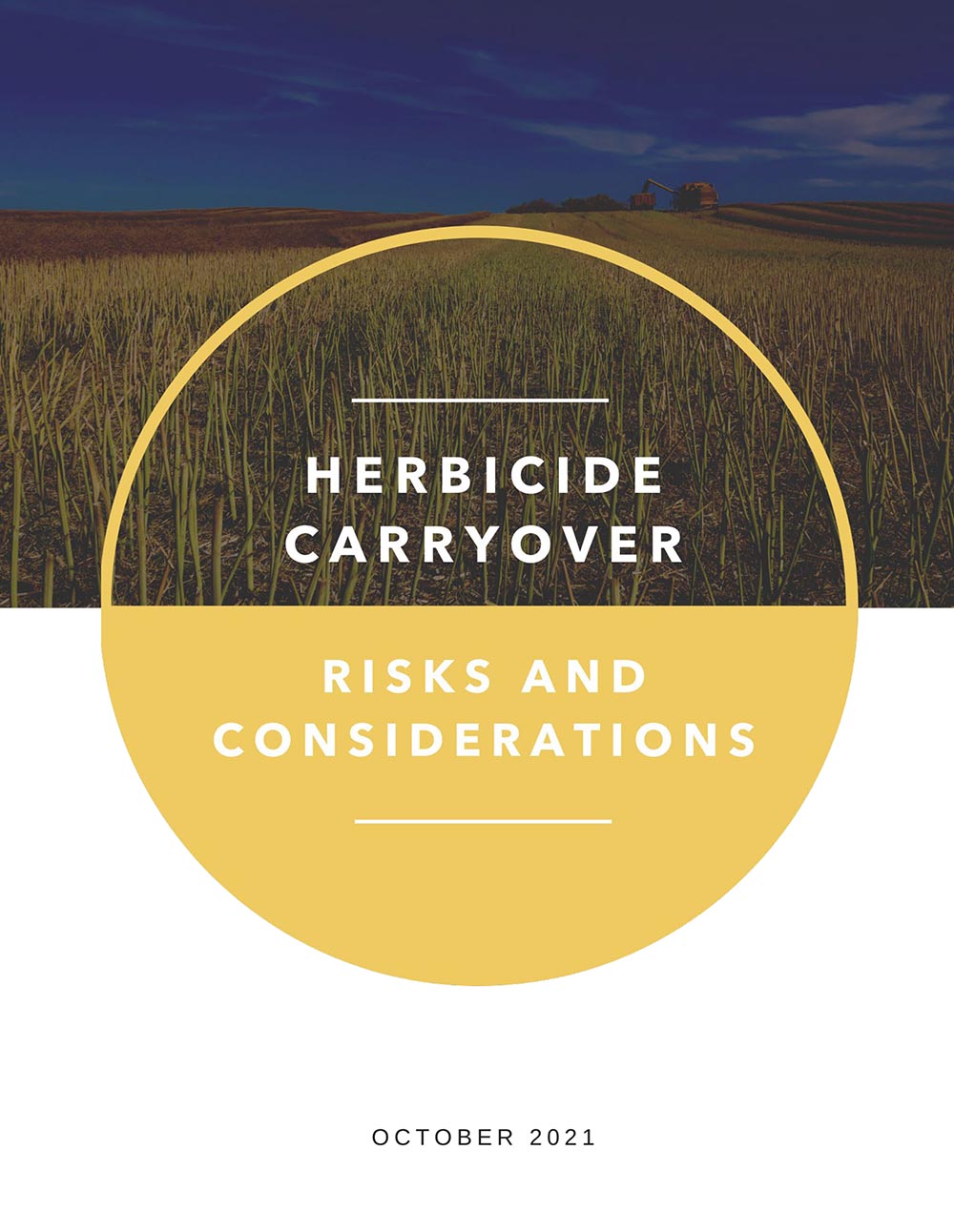Pulses & Flax
AgraCity’s Product Performance Guarantee: Peace of Mind in the Ever-Changing Farming Landscape
Explore the essence of farming resilience in Canada with AgraCity's exclusive Product Performance Guarantee, offering peace of mind amid the dynamic agricultural landscape
Managing Pest and Disease Challenges in Western Canada’s Cereal Crops
Cereal crop production in Western Canada plays a pivotal role in shaping the region's agricultural landscape, as well Canada’s agriculture industry. Canada's cereals sector leads the country's agriculture exports with annual exports to over 80 countries with an estimated value of $9.8 billion CAD, according to Cereals Canada.
Swathing vs. Direct Combining for Canola Harvest
Good agronomic practices play a crucial role in achieving optimal canola yields, but the importance of proper harvest management cannot be overstated.
Effective Weed Control for Canola in Western Canada
Canola weed control requires a comprehensive approach that includes a combination of farming practices, herbicide applications, and an integrated approach tailored to the specific weeds being targeted.
Choosing the Right Fertilizers for Successful Canola Cultivation
Choosing the Right Fertilizers for Successful Canola Cultivation Canola farming in Western Canada presents a unique set of challenges and opportunities. To ensure a successful harvest and maximize yields, selecting the appropriate fertilizer is crucial. In this guide, we delve into the key considerations for choosing the right fertilizer blend which aligns with your canola crops' needs. Understanding Canola's Nutritional Needs: Nitrogen (N): ...READ MORE
Canada Consolidation
Consolidation Reshaping Canadian Crop Inputs Industry The Canadian crop inputs industry has experienced significant consolidation in recent years, with a number of mergers and acquisitions among major companies in the sector. These mergers and acquisitions have had significant impacts on the Canadian crop inputs industry, including changes to the competitive landscape, shifts in product offerings, and changes in pricing and supply chains. While consolidation can provide ...READ MORE
Tips on Effective Sprayer Tank Cleanout
Tips on Effective Sprayer Tank Cleanout Herbicide application in western Canada is complex with many different factors that need to be considered. And with more diverse crop rotations, it is more important than ever to do a good job of sprayer tank cleanout. Most herbicides used in western Canada have many great attributes, including good performance, concentrated formulations, tank mix options, and are easy ...READ MORE
How can you Maximize your Return on Investment with Fungicides this year?
How can you Maximize your Return on Investment with Fungicides this year? The decision to apply fungicide can be complex, and maximizing your return on investment is important. Below are some things to think about when applying fungicides this year How Can You Determine If A Fungicide Application Makes Sense? The question of whether it makes sense to apply a fungicide is complicated and ...READ MORE
The Most Common Questions That Agronomists Get Regarding Herbicide Application
The Most Common Questions That Agronomists Get Regarding Herbicide Application Mixing What is a general mixing order when tank mixing herbicides? The general mixing order is represented by the acronym WALES. This stands for: Wettable powders (dry ingredients, such as SG, WDG, DF formulations) Agitate (to ensure dry ingredients are well mixed) Liquid and soluble products (such as SC, SL formulations) Emulsifiable concentrates (EC ...READ MORE
How Can You Improve Your Herbicide Performance This Year?
How Can You Improve Your Herbicide Performance This Year? With herbicides being a significant part of your crop input costs every year, it makes sense to think about how to get the best performance out of your herbicide purchase, instead of spending more on the latest, more expensive herbicides that may not actually perform much better. Below are some tips that can help you ...READ MORE
Kochia: What Can Farmers Do to Manage This Problem Weed?
Kochia: What Can Farmers Do to Manage This Problem Weed? Kochia has become a troublesome weed for growers across western Canada, and the problem seems to be getting worse. In the article below is information on understanding kochia and suggestions on how to manage kochia long term. Kochia biology. Kochia is a member of the goosefoot (Chenopodiaceae) plant family (like lambs-quarters) and is a subfamily ...READ MORE
Understanding Herbicide Resistance: How Did It Develop and How Can Growers Manage This Issue?
Understanding Herbicide Resistance: How Did It Develop and How Can Growers Manage This Issue? What is herbicide resistance? When we talk about herbicide resistance, we are usually referring to a situation where a weed or weeds that were once controlled by a herbicide now survives a herbicide application at normal rates and completes their life cycle. This is different than tolerance, which is the ...READ MORE
What is the best application timing for Pre-seed or Reduced Tillage Herbicide application?
What Is The Best Application Timing For Pre-seed or Reduced Tillage Herbicide Application? Depending on where you farm, pre-seed herbicide application time could still be weeks away, so there is still time to think about how to maximize your pre-seed herbicide application this year. When is it too cold to apply? Pre-seed application can be challenging due to variable weather conditions, products will performance ...READ MORE
Ideas To Manage Pulse Crop Inputs
Ideas To Manage Pulse Crop Inputs With input costs on the rise, unpredictable markets and variable weather, what can you do to manage your input costs for pulses in 2020? Below are some ideas that could help. Make sure your equipment is field ready. Tune up and repair all your field equipment prior to spring work. Poorly maintained equipment can increase fuel consumption and ...READ MORE
Understanding different kinds of Adjuvants and Surfactants
Understanding different kinds of Adjuvants and Surfactants Understanding Different Kinds of Adjuvants And Surfactants Many herbicides and fungicides on the market require an adjuvant for optimum performance. But what are adjuvants and surfactants, and why are they important? Generally, pesticides need to dissolve in water in order to apply them (“hydrophilic”). However, plant leaves are waxy, so they also need to be able to ...READ MORE
How Can You Maximize the Performance of Your Post-Harvest Herbicide This Year?
How Can You Maximize the Performance of Your Post-Harvest Herbicide This Year? How Can You Maximize the Performance of Your Post-Harvest Herbicide This Year? With an earlier harvest this year than in previous years, it is a good time to consider post-harvest herbicide application to manage hard to control winter annual and perennial weeds and clean up your fields for next year. Here are ...READ MORE
Managing Herbicide Resistance
Managing Herbicide Resistance In the past several decades, many Canadian farmers have seen firsthand the challenge of herbicide resistance on their farms. Herbicide-resistant weeds develop due to the repeated use of the same herbicide group over a number of years on the same field. This typically starts with a small number of weeds developing resistance, and these weeds then spreading across a field and ...READ MORE
Stretch Glyphosate
How To Stretch Your Glyphosate Use Without Reducing Your Weed Control This Year With glyphosate potentially in short supply this year, what can farmers do to stretch the amount of product they have? Below are some tips to make your pre-seed glyphosate go further. 1. Scout your fields to determine if pre-seed herbicide is required. If a field had an application of glyphosate ...READ MORE
Herbicide Carryover – Risks and Considerations
Drought Conditions Increase Herbicide Carryover Risk PDF Article authored by: SaskCanola, SaskPulse and Sask Wheat Herbicide carryover becomes a concern after dry conditions because soil moisture largely dictates the rate of soil residual herbicide breakdown due to its influence on two of the major degradation mechanisms: microbial activity and chemical hydrolysis. Although soil parameters such as pH and organic matter can influence degradation pathways, ...READ MORE
4 Reasons to Buy From AgraCity
Top 4 Reasons To Buy From AgraCity In addition to having Canada's largest selection of affordable crop inputs, an industry leading product performance guarantee and being Canadian owned and operated, AgraCity provides year round agronomy support. At AgraCity, we’re committed to providing Canadian farmers with the largest portfolio of crop protection products in the industry. If you’re looking for a wide range of crop inputs for ...READ MORE
Identifying Nutrient Deficiencies in Your Crop
Identifying Nutrient Deficiencies in Your Crop Micro-Phos is an innovative fertilizer solution that could help your crops—cereals, corn, soybeans, canola, peas, lentils and more—perform to their full potential. Identification of nutrient deficiencies, whether in the soil or in the crop, is the first step to determining a crop nutrition plan to suit your operation best. Soil testing before planting can help to understand the current nutrients in your ...READ MORE
Three Benefits of using Micro-Phos
Three Benefits of Using Micro-Phos Micro-Phos is an innovative fertilizer solution that could help your crops—cereals, corn, soybeans, canola, peas, lentils and more—perform to their full potential. We all know supplying your crops with the right nutrients through fertilizer is an important part of your crop nutrition plan. Some fertilizers, however, are built different compared to others. Micro-Phos is a premium fertilizer solution that uses an ...READ MORE
The Nutrients Needed to Maximize Yields – Micro-Phos
The Nutrients Needed to Maximize Yields – Micro-Phos Just like you need the right combination of macro and micronutrients to fuel your body, your crops also require a variety of nutrients to ensure optimal growth. But what do those nutrients do for the crop? Each nutrient in the soil will provide different strengths to give your crops the best chance at maximizing yields. Using a fertilizer like Micro-Phos ...READ MORE
Discounts versus Year End Rebates
Some Benefits and Drawbacks of Up-front Discounts versus Year-end Rebates From Rewards Programs AN AGRACITY PERSPECTIVE Rebates and reward programs have been around for many years, however in the past number of years many of the larger crop input companies have ramped up reward programs and rebates to incentivize farmers to purchase their products and maintain loyalty. While every farm and farmer will have a different ...READ MORE
Talk to the Experts
TALK TO THE EXPERTS Talk to the Experts is a series of interviews on various topics on agriculture, agronomy and AgraCity.
Upcoming Products
These products are currently being assessed for registration under the Pest Control Products Act. They cannot be manufactured, imported, distributed, or used in Canada at this time, unless explicit authorization has been obtained from Health Canada to use this product for the purpose of conducting research under the Pest Control Products Regulations.
Pulses & Flax
AgraCity’s Product Performance Guarantee: Peace of Mind in the Ever-Changing Farming Landscape
Explore the essence of farming resilience in Canada with AgraCity's exclusive Product Performance Guarantee, offering peace of mind amid the dynamic agricultural landscape
Managing Pest and Disease Challenges in Western Canada’s Cereal Crops
Cereal crop production in Western Canada plays a pivotal role in shaping the region's agricultural landscape, as well Canada’s agriculture industry. Canada's cereals sector leads the country's agriculture exports with annual exports to over 80 countries with an estimated value of $9.8 billion CAD, according to Cereals Canada.
Swathing vs. Direct Combining for Canola Harvest
Good agronomic practices play a crucial role in achieving optimal canola yields, but the importance of proper harvest management cannot be overstated.
Effective Weed Control for Canola in Western Canada
Canola weed control requires a comprehensive approach that includes a combination of farming practices, herbicide applications, and an integrated approach tailored to the specific weeds being targeted.
Choosing the Right Fertilizers for Successful Canola Cultivation
Choosing the Right Fertilizers for Successful Canola Cultivation Canola farming in Western Canada presents a unique set of challenges and opportunities. To ensure a successful harvest and maximize yields, selecting the appropriate fertilizer is crucial. In this guide, we delve into the key considerations for choosing the right fertilizer blend which aligns with your canola crops' needs. Understanding Canola's Nutritional Needs: Nitrogen (N): ...READ MORE
Canada Consolidation
Consolidation Reshaping Canadian Crop Inputs Industry The Canadian crop inputs industry has experienced significant consolidation in recent years, with a number of mergers and acquisitions among major companies in the sector. These mergers and acquisitions have had significant impacts on the Canadian crop inputs industry, including changes to the competitive landscape, shifts in product offerings, and changes in pricing and supply chains. While consolidation can provide ...READ MORE
Tips on Effective Sprayer Tank Cleanout
Tips on Effective Sprayer Tank Cleanout Herbicide application in western Canada is complex with many different factors that need to be considered. And with more diverse crop rotations, it is more important than ever to do a good job of sprayer tank cleanout. Most herbicides used in western Canada have many great attributes, including good performance, concentrated formulations, tank mix options, and are easy ...READ MORE
How can you Maximize your Return on Investment with Fungicides this year?
How can you Maximize your Return on Investment with Fungicides this year? The decision to apply fungicide can be complex, and maximizing your return on investment is important. Below are some things to think about when applying fungicides this year How Can You Determine If A Fungicide Application Makes Sense? The question of whether it makes sense to apply a fungicide is complicated and ...READ MORE
The Most Common Questions That Agronomists Get Regarding Herbicide Application
The Most Common Questions That Agronomists Get Regarding Herbicide Application Mixing What is a general mixing order when tank mixing herbicides? The general mixing order is represented by the acronym WALES. This stands for: Wettable powders (dry ingredients, such as SG, WDG, DF formulations) Agitate (to ensure dry ingredients are well mixed) Liquid and soluble products (such as SC, SL formulations) Emulsifiable concentrates (EC ...READ MORE
How Can You Improve Your Herbicide Performance This Year?
How Can You Improve Your Herbicide Performance This Year? With herbicides being a significant part of your crop input costs every year, it makes sense to think about how to get the best performance out of your herbicide purchase, instead of spending more on the latest, more expensive herbicides that may not actually perform much better. Below are some tips that can help you ...READ MORE
Kochia: What Can Farmers Do to Manage This Problem Weed?
Kochia: What Can Farmers Do to Manage This Problem Weed? Kochia has become a troublesome weed for growers across western Canada, and the problem seems to be getting worse. In the article below is information on understanding kochia and suggestions on how to manage kochia long term. Kochia biology. Kochia is a member of the goosefoot (Chenopodiaceae) plant family (like lambs-quarters) and is a subfamily ...READ MORE
Understanding Herbicide Resistance: How Did It Develop and How Can Growers Manage This Issue?
Understanding Herbicide Resistance: How Did It Develop and How Can Growers Manage This Issue? What is herbicide resistance? When we talk about herbicide resistance, we are usually referring to a situation where a weed or weeds that were once controlled by a herbicide now survives a herbicide application at normal rates and completes their life cycle. This is different than tolerance, which is the ...READ MORE
What is the best application timing for Pre-seed or Reduced Tillage Herbicide application?
What Is The Best Application Timing For Pre-seed or Reduced Tillage Herbicide Application? Depending on where you farm, pre-seed herbicide application time could still be weeks away, so there is still time to think about how to maximize your pre-seed herbicide application this year. When is it too cold to apply? Pre-seed application can be challenging due to variable weather conditions, products will performance ...READ MORE
Ideas To Manage Pulse Crop Inputs
Ideas To Manage Pulse Crop Inputs With input costs on the rise, unpredictable markets and variable weather, what can you do to manage your input costs for pulses in 2020? Below are some ideas that could help. Make sure your equipment is field ready. Tune up and repair all your field equipment prior to spring work. Poorly maintained equipment can increase fuel consumption and ...READ MORE
Understanding different kinds of Adjuvants and Surfactants
Understanding different kinds of Adjuvants and Surfactants Understanding Different Kinds of Adjuvants And Surfactants Many herbicides and fungicides on the market require an adjuvant for optimum performance. But what are adjuvants and surfactants, and why are they important? Generally, pesticides need to dissolve in water in order to apply them (“hydrophilic”). However, plant leaves are waxy, so they also need to be able to ...READ MORE
How Can You Maximize the Performance of Your Post-Harvest Herbicide This Year?
How Can You Maximize the Performance of Your Post-Harvest Herbicide This Year? How Can You Maximize the Performance of Your Post-Harvest Herbicide This Year? With an earlier harvest this year than in previous years, it is a good time to consider post-harvest herbicide application to manage hard to control winter annual and perennial weeds and clean up your fields for next year. Here are ...READ MORE
Managing Herbicide Resistance
Managing Herbicide Resistance In the past several decades, many Canadian farmers have seen firsthand the challenge of herbicide resistance on their farms. Herbicide-resistant weeds develop due to the repeated use of the same herbicide group over a number of years on the same field. This typically starts with a small number of weeds developing resistance, and these weeds then spreading across a field and ...READ MORE
Stretch Glyphosate
How To Stretch Your Glyphosate Use Without Reducing Your Weed Control This Year With glyphosate potentially in short supply this year, what can farmers do to stretch the amount of product they have? Below are some tips to make your pre-seed glyphosate go further. 1. Scout your fields to determine if pre-seed herbicide is required. If a field had an application of glyphosate ...READ MORE
Herbicide Carryover – Risks and Considerations
Drought Conditions Increase Herbicide Carryover Risk PDF Article authored by: SaskCanola, SaskPulse and Sask Wheat Herbicide carryover becomes a concern after dry conditions because soil moisture largely dictates the rate of soil residual herbicide breakdown due to its influence on two of the major degradation mechanisms: microbial activity and chemical hydrolysis. Although soil parameters such as pH and organic matter can influence degradation pathways, ...READ MORE
4 Reasons to Buy From AgraCity
Top 4 Reasons To Buy From AgraCity In addition to having Canada's largest selection of affordable crop inputs, an industry leading product performance guarantee and being Canadian owned and operated, AgraCity provides year round agronomy support. At AgraCity, we’re committed to providing Canadian farmers with the largest portfolio of crop protection products in the industry. If you’re looking for a wide range of crop inputs for ...READ MORE
Identifying Nutrient Deficiencies in Your Crop
Identifying Nutrient Deficiencies in Your Crop Micro-Phos is an innovative fertilizer solution that could help your crops—cereals, corn, soybeans, canola, peas, lentils and more—perform to their full potential. Identification of nutrient deficiencies, whether in the soil or in the crop, is the first step to determining a crop nutrition plan to suit your operation best. Soil testing before planting can help to understand the current nutrients in your ...READ MORE
Three Benefits of using Micro-Phos
Three Benefits of Using Micro-Phos Micro-Phos is an innovative fertilizer solution that could help your crops—cereals, corn, soybeans, canola, peas, lentils and more—perform to their full potential. We all know supplying your crops with the right nutrients through fertilizer is an important part of your crop nutrition plan. Some fertilizers, however, are built different compared to others. Micro-Phos is a premium fertilizer solution that uses an ...READ MORE
The Nutrients Needed to Maximize Yields – Micro-Phos
The Nutrients Needed to Maximize Yields – Micro-Phos Just like you need the right combination of macro and micronutrients to fuel your body, your crops also require a variety of nutrients to ensure optimal growth. But what do those nutrients do for the crop? Each nutrient in the soil will provide different strengths to give your crops the best chance at maximizing yields. Using a fertilizer like Micro-Phos ...READ MORE
Discounts versus Year End Rebates
Some Benefits and Drawbacks of Up-front Discounts versus Year-end Rebates From Rewards Programs AN AGRACITY PERSPECTIVE Rebates and reward programs have been around for many years, however in the past number of years many of the larger crop input companies have ramped up reward programs and rebates to incentivize farmers to purchase their products and maintain loyalty. While every farm and farmer will have a different ...READ MORE
Talk to the Experts
TALK TO THE EXPERTS Talk to the Experts is a series of interviews on various topics on agriculture, agronomy and AgraCity.









